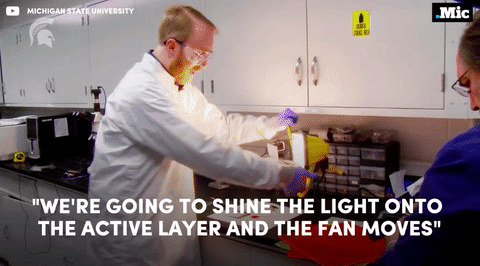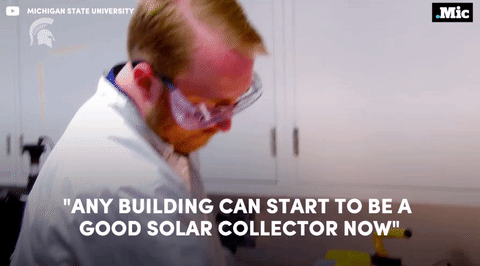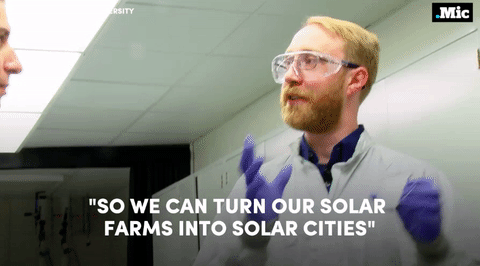Save Science
Save Science
Not sure what to say. I’m actually legitimately nervous the Cheeto-in-Chief will demand a hold on the National Science Foundation grants like he did the EPA (disclaimer, the NSF is where my job comes from).
I feel so terrible for all the scientists and students who are now out of the job
More Posts from Maevetheeuropan and Others

This is hands down one of the most beautiful images I’ve ever seen. This is a visible-light image of Jupiter’s clouds from a mere 5000 km away.
What’s even more amazing is that this image was taken by JunoCam, NASA’s camera essentially being controlled by regular folks, not scientists. The public takes part in selecting targets to photograph, as well as having access to the raw data that comes back and you can even take the raw images that come back and process your own picture! Learn more about it all right here.
Thank you NASA!
(Image credit: NASA/JPL-Caltech/SwRI/MSSS/Gerald Eichstaedt/John Rogers)
NASA Technology in Your Life
How does NASA technology benefit life on Earth? It probably has an impact in more ways than you think! Since 1976, our Spinoff program has profiled nearly 2,000 space technologies that have transformed into commercial products and services. In celebration of Spinoff’s 40th year of publication, we’ve assembled a collection of spinoffs that have had the greatest impact on Earth.
Take a look and see how many you utilize on a regular basis:
Digital Image Sensors

Whether you take pictures and videos with a DSLR camera or a cell phone, or even capture action on the go with a device like a GoPro Hero, you’re using NASA technology. The CMOS active pixel sensor in most digital image- capturing devices was invented when we needed to miniaturize cameras for interplanetary missions. This technology is also widely used in medical imaging and dental X-ray devices.
Enriched Baby Formula

While developing life support for Mars missions, NASA-funded researchers discovered a natural source for an omega-3 fatty acid previously found primarily in breast milk that plays a key role in infant development. The ingredient has since been added to more than 90% of infant formula on the market and is helping babies worldwide develop healthy brains, eyes and hearts.
NASTRAN Software

NASTRAN is a software developed by our engineers that performs structural analysis in the 1960s. Still popular today, it’s been used to help design everything from airplanes and cars to nuclear reactors and even Disney’s Space Mountain roller coaster.
Food Safety Standards

Looking to ensure the absolute safety of prepackaged foods for spaceflight, we partnered with the Pillsbury Company to create a new, systematic approach to quality control. Now known as Hazard Analysis and Critical Control Points (HACCP), the method has become an industry standard that benefits consumers worldwide by keeping food free from a wide range of potential chemical, physical and biological hazards.
Neutral Body Posture Specifications

What form does the human body naturally assume when all physical influences, including the pull of gravity, stop affecting it? We conducted research to find out using Skylab, America’s first space station, and later published specifications for what it called neutral body posture. The study has informed seat designs in everything from airplanes and office chairs to several models of Nissan automobiles.
Advanced Water Filtration

We recently discovered unexpected sources of water on the moon and Mars, but even so, space remains a desert for human explorers, and every drop must be recycled and reused. A nano filter devised to purify water in orbit is currently at work on Earth, in devices that supply water to remote villages as well as in a water bottle that lets hikers and adventurers stay hydrated using streams and lakes.
Swimsuit Designs

Wind-tunnel testing at our Langley Research Center played a key role in the development of Speedo’s LZR Racer swimsuit, proving which materials and seams best reduced drag as a swimmer cuts through the water. The swimsuit made a splash during its Olympic debut in 2008, as nearly every medal winner and world-record breaker wore the suit.
Air Purifier

When plants grow, they release a gas called ethylene that accelerates decay, hastening the wilting of flowers and the ripening of fruits and vegetables. Air circulation on Earth keeps the fumes from building up, but in the hermetically sealed environment of a spacecraft, ethylene poses a real challenge to the would-be space farmers. We funded the development of an ethylene scrubber for the International Space Station that has subsequently proved capable of purifying air on Earth from all kinds of pathogens and particulates. Grocery stores use it to keep produce fresh longer. It’s also been marketed for home use and has even been embraced by winemakers, who employ the scrubber to keep aging wine in barrels free from mold, mildew and musty odors.
Scratch-Resistant, UV-Reflective Lenses

Some of the earliest research into effective scratch-resistant coatings for prescription and sunglass lenses drew from work done at Ames Research Center on coatings for astronaut helmet visors and plastic membranes used in water purification systems. In the 1980s, we developed sunlight-filtering lenses to provide eye protection and enhance colors, and these lenses have found their way into sunglasses, ski goggles and safety masks for welders.
Dustbuster

An Apollo-era partnership with Black & Decker to build battery-operated tools for moon exploration and sample collection led to the development of a line of consumer, medical and industrial hand-held cordless tools. This includes the popular Dustbuster cordless vacuum.
To see even more of our spinoff technologies, visit: http://www.nasa.gov/offices/oct/40-years-of-nasa-spinoff
Make sure to follow us on Tumblr for your regular dose of space: http://nasa.tumblr.com

NASA scientists have reported that they’ve successfully tested an engine called the electromagnetic propulsion drive, or the EM Drive, in a vacuum that replicates space. The EM Drive experimental system could take humans to Mars in just 70 days without the need for rocket fuel, and it’s no exaggeration to say that this could change everything.
But before we get too excited (who are we kidding, we’re already freaking out), it’s important to note that these results haven’t been replicated or verified by peer review, so there’s a chance there’s been some kind of error. But so far, despite a thorough attempt to poke holes in the results, the engine seems to hold up.
Continue Reading.

What’s hard about Mars?
Mars, unlike the Moon, is far away. It also has an atmosphere - but not a useful one. Atmospheric density, wind, dust storms… all of these things contribute to a larger list of circumstances that any given mission needs to be ready for.
All those circumstances contribute heavily to the cost, time and hard resources needed to be poured into the mission preparation. In addition, the vast distance to Mars means the cost of carrying all this prepared hardware must be covered.
The atmosphere of Mars is such that if you’re going too fast during entry, you’ll burn up. It’s such a low density however that parachutes aren’t tremendously useful.
During the Curiosity rover’s landing it needed a heat shield, a supersonic parachute, rocket boosters to slow it down, a sky-crane to allow Curiosity to drop to the surface like an interplanetary spider and then explosive propulsion to send the platform it dropped from a safe distance away to crash into the surface.
During this landing, the rover experienced a force of about 15 g’s. That force would make a 200 lb man weigh 3000 lbs. Without proper precautions it would make the average head snap down at about 150 to 165 lbs.
NASA’s developing a new type of parachute and it’s being attached to a flying saucer-like spacecraft known as the Low-Density Supersonic Decelerator. This is currently hoped to provide NASA with a stable go-to architecture for future Mars missions.
The red planet’s killed most missions sent there. Power for solar-panels on rovers get covered during planet-wide dust storms. Some missions smashed into its moons. Some have smashed into its surface. Others have simply missions the planet entirely only to drift away as Mars dances around the Sun.
The world is an untamed place and has sought to buck all attempts to temper its mysteries.
(Image credit: ESA / DLR / FU Berlin (G. Neukum) / animation by Emily Lakdawalla)

Solar System: Things to Know This Week
Learn about the science of photonics to create space communications, get updates on Juno, mining data from Voyager for new discoveries and more.

1. Carried on a Beam of Light
One of our major priorities is to make space communications more efficient. While our communications systems have matured over the decades, they still use the same radio-frequency system developed in the earliest days of the agency. After more than 50 years, we’re investing in new ways to increase data rates while also finding more efficient communications systems. Photonics–generating, detecting and manipulating particles of light–may provide the solution.
+ See how it works

2. It’s No Joke: Two New Moons for the Seventh Planet
Voyager 2 spacecraft flew by Uranus 30 years ago, but researchers are still making discoveries using the data it gathered. A new study led by University of Idaho researchers suggests there could be two tiny, previously undiscovered moonlets orbiting near two of the planet’s rings.
+ Find out how they were discovered

3. Vortex of Mystery
As southern winter solstice approaches in the Saturn system, our Cassini spacecraft has revealed dramatic seasonal changes in the atmospheric temperature and composition of Saturn’s largest moon, Titan. Winter is taking a grip on Titan’s southern hemisphere, and a strong, whirling vortex has intensified in the upper atmosphere over the south pole.
+See more

4. The Spiders of Mars
Ten thousand volunteers viewing images of Martian south polar regions have helped identify targets for closer inspection, yielding new insights about seasonal slabs of frozen carbon dioxide and erosional features known as “spiders.” From the comfort of home, the volunteers have been exploring the surface of Mars by reviewing images from the Context Camera on our Mars Reconnaissance Orbiter and identifying certain types of seasonal terrains near Mars’ south pole.
+ Learn more and see how you can join in

7. Better Safe than Sorry
Juno entered safe mode last week and early indications are a software performance monitor induced a reboot of the spacecraft’s onboard computer. In this case, the safe mode turned off instruments and a few non-critical spacecraft components, and it confirmed the spacecraft was pointed toward the sun to ensure the solar arrays received power.The spacecraft acted as expected during the transition into safe mode, restarted successfully and is healthy. High-rate data has been restored, and the spacecraft is conducting flight software diagnostics. Meanwhile, the Juno science team continues to analyze returns from the first close Jupiter flyby on Aug. 27. Revelations so far include that Jupiter’s magnetic fields and aurora are bigger and more powerful than thought. Scientists have also had their first glimpse below the planet’s swirling cloud deck. The next close flyby is scheduled on Dec. 11, with all science instruments on.
+ Get the details
Discover the full list of 10 things to know about our solar system this week HERE.
Make sure to follow us on Tumblr for your regular dose of space: http://nasa.tumblr.com










this is a massive step forward for renewable energy (x) | follow @the-future-now


Chasma Boreale and North Polar Ice Cap of Mars by NASA’s Marshall Space Flight Center on Flickr.
Mars has bright polar caps of ice that are easily visible from telescopes on Earth. A seasonal cover of carbon-dioxide ice and snow is observed to advance and retreat over the poles during the Martian year. Scientists using radar data from NASA’s Mars Reconnaissance Orbiter (MRO) have found a record of the most recent Martian ice age recorded in the planet’s north polar ice cap. This image is a simulated 3-D perspective view of Chasma Boreale, a canyon that reaches 570 kilometers (350 miles) into the north polar cap. It was created from image data taken by the THEMIS instrument on NASA’s Mars Odyssey spacecraft. Canyon walls rise about 1,400 meters (4,600 feet) above the floor of Chasma Boreale. Where the edge of the ice cap has retreated, sheets of sand are emerging that accumulated during earlier ice-free climatic cycles. Winds blowing off the ice have pushed loose sand into dunes, then driven them down-canyon in a westward direction.
-
 goddess-of-the-galaxy liked this · 8 years ago
goddess-of-the-galaxy liked this · 8 years ago -
 thekrakenstirs reblogged this · 8 years ago
thekrakenstirs reblogged this · 8 years ago -
 doctordearie liked this · 8 years ago
doctordearie liked this · 8 years ago -
 youseless-reptile liked this · 8 years ago
youseless-reptile liked this · 8 years ago -
 klutris liked this · 8 years ago
klutris liked this · 8 years ago -
 discofvg reblogged this · 8 years ago
discofvg reblogged this · 8 years ago -
 jiminliess liked this · 8 years ago
jiminliess liked this · 8 years ago -
 drgrubbystreetcat reblogged this · 8 years ago
drgrubbystreetcat reblogged this · 8 years ago -
 marianaysusmomentos reblogged this · 8 years ago
marianaysusmomentos reblogged this · 8 years ago -
 ji11ian1 reblogged this · 8 years ago
ji11ian1 reblogged this · 8 years ago -
 ji11ian1 liked this · 8 years ago
ji11ian1 liked this · 8 years ago -
 vanissha liked this · 8 years ago
vanissha liked this · 8 years ago -
 gamingmage3 liked this · 8 years ago
gamingmage3 liked this · 8 years ago -
 the-fabulous-book liked this · 8 years ago
the-fabulous-book liked this · 8 years ago -
 nastylittleratgirl reblogged this · 8 years ago
nastylittleratgirl reblogged this · 8 years ago -
 nastylittleratgirl liked this · 8 years ago
nastylittleratgirl liked this · 8 years ago -
 somethingsomethingrandomblog liked this · 8 years ago
somethingsomethingrandomblog liked this · 8 years ago -
 starsinteacups reblogged this · 8 years ago
starsinteacups reblogged this · 8 years ago -
 starsinteacups liked this · 8 years ago
starsinteacups liked this · 8 years ago -
 eldritchlittleblackdragon liked this · 8 years ago
eldritchlittleblackdragon liked this · 8 years ago -
 krogancutie liked this · 8 years ago
krogancutie liked this · 8 years ago -
 screwthisnaming reblogged this · 8 years ago
screwthisnaming reblogged this · 8 years ago -
 symb1oso reblogged this · 8 years ago
symb1oso reblogged this · 8 years ago -
 mydadisindianajones reblogged this · 8 years ago
mydadisindianajones reblogged this · 8 years ago -
 mydadisindianajones liked this · 8 years ago
mydadisindianajones liked this · 8 years ago -
 mousey-merlin-monroe reblogged this · 8 years ago
mousey-merlin-monroe reblogged this · 8 years ago -
 undonefury liked this · 8 years ago
undonefury liked this · 8 years ago -
 marked-by-moonlight reblogged this · 8 years ago
marked-by-moonlight reblogged this · 8 years ago -
 marked-by-moonlight liked this · 8 years ago
marked-by-moonlight liked this · 8 years ago -
 avaliakasa liked this · 8 years ago
avaliakasa liked this · 8 years ago -
 thegeekynerd liked this · 8 years ago
thegeekynerd liked this · 8 years ago -
 space-sapphik liked this · 8 years ago
space-sapphik liked this · 8 years ago -
 alrightok24421245 liked this · 8 years ago
alrightok24421245 liked this · 8 years ago -
 bibecamitchell liked this · 8 years ago
bibecamitchell liked this · 8 years ago -
 profangirlintoomanyfandoms liked this · 8 years ago
profangirlintoomanyfandoms liked this · 8 years ago -
 incognito-cakepie-blog reblogged this · 8 years ago
incognito-cakepie-blog reblogged this · 8 years ago -
 wecomeinmeow reblogged this · 8 years ago
wecomeinmeow reblogged this · 8 years ago -
 wecomeinmeow liked this · 8 years ago
wecomeinmeow liked this · 8 years ago -
 frostedmeats liked this · 8 years ago
frostedmeats liked this · 8 years ago -
 ohkdarling liked this · 8 years ago
ohkdarling liked this · 8 years ago -
 picaauwu liked this · 8 years ago
picaauwu liked this · 8 years ago -
 bubblesarebeautiful liked this · 8 years ago
bubblesarebeautiful liked this · 8 years ago -
 ienjoystingrays reblogged this · 8 years ago
ienjoystingrays reblogged this · 8 years ago
